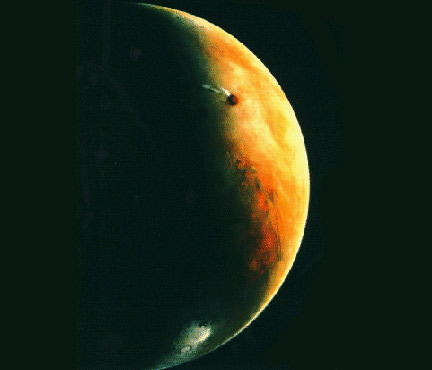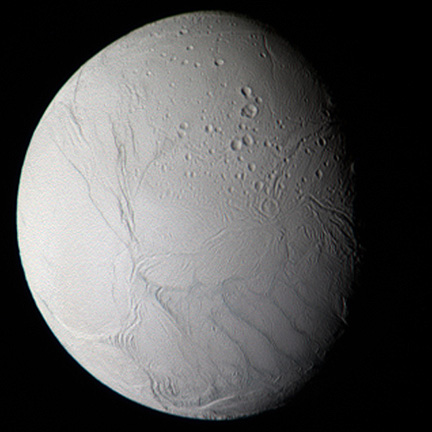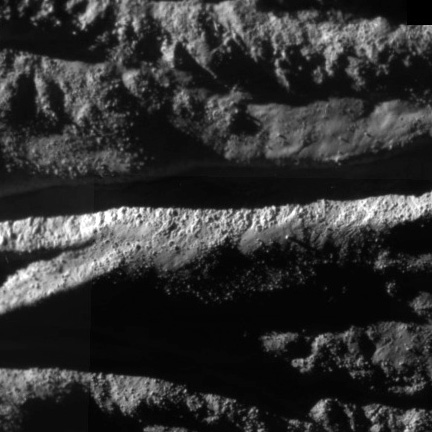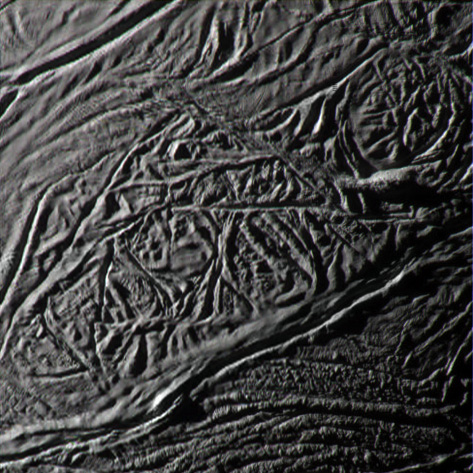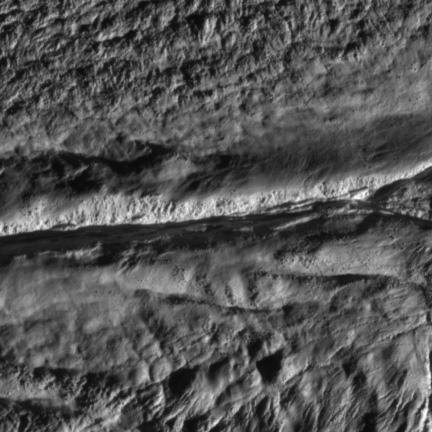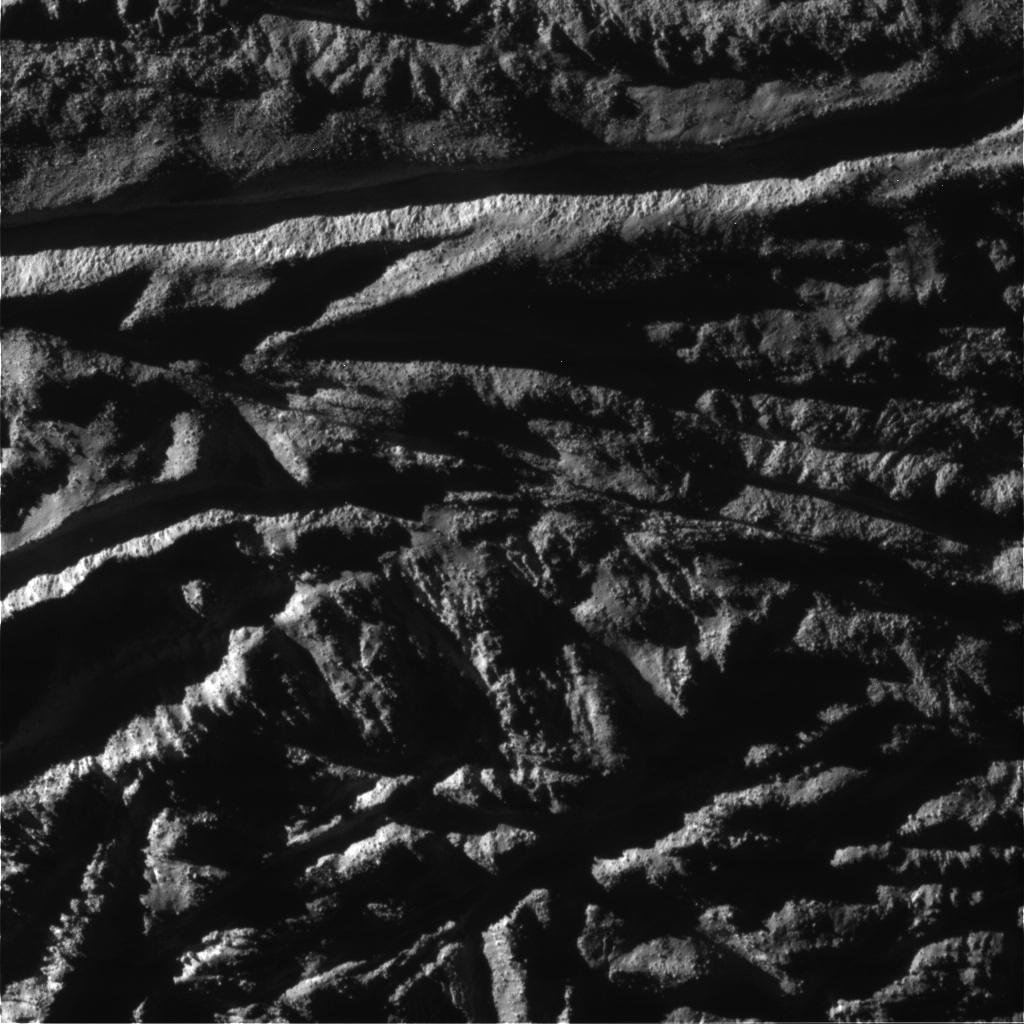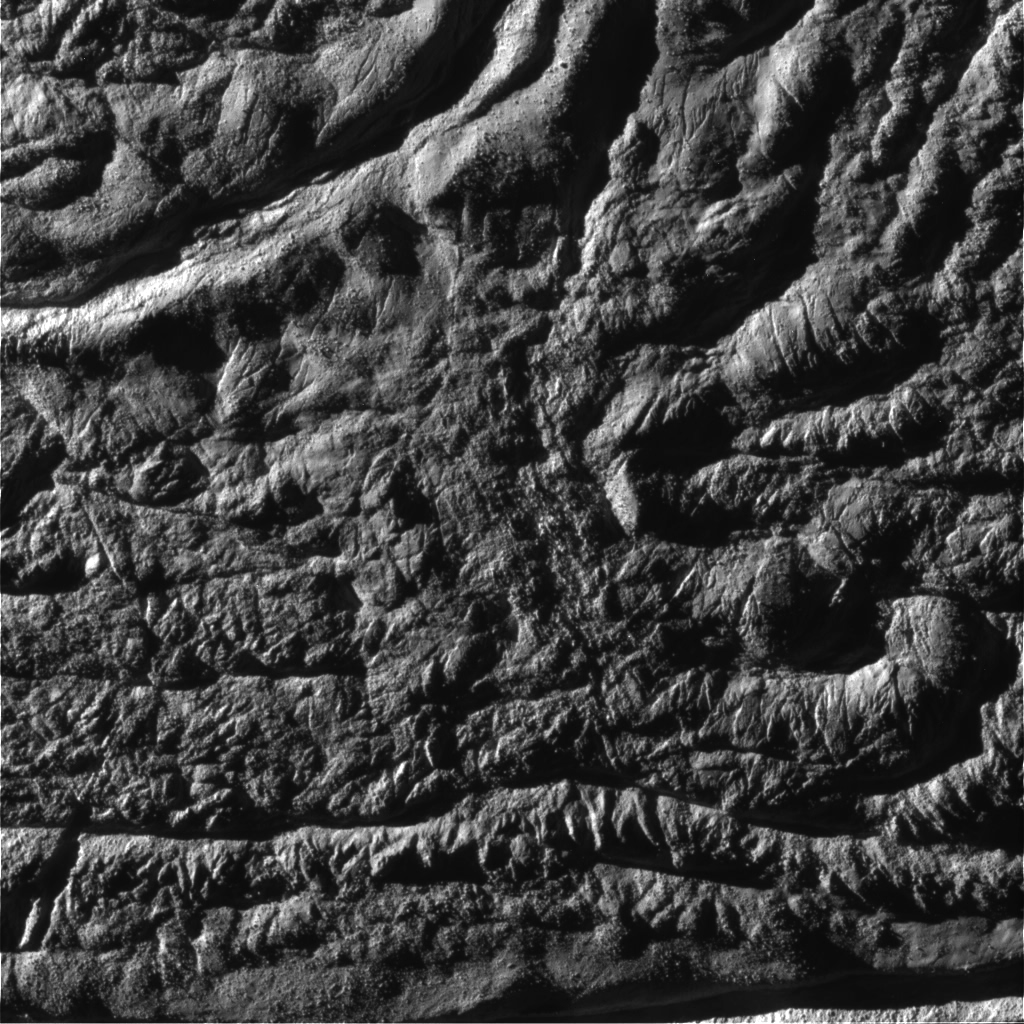The Planetary Blog today posted an animation of Comet Halley captured by Vega 1 in 1986. The low quality of the Vega images reminded me of how low quality all the mission images to Halley were for their historic encounters. There was one image I found of Halley taken by Giotto that seemed to me to be the best I had ever seen in terms of detail and captured much of the coma that envelopes the nucleus as well. Here is that original image which was found at www.astro.lu.se.
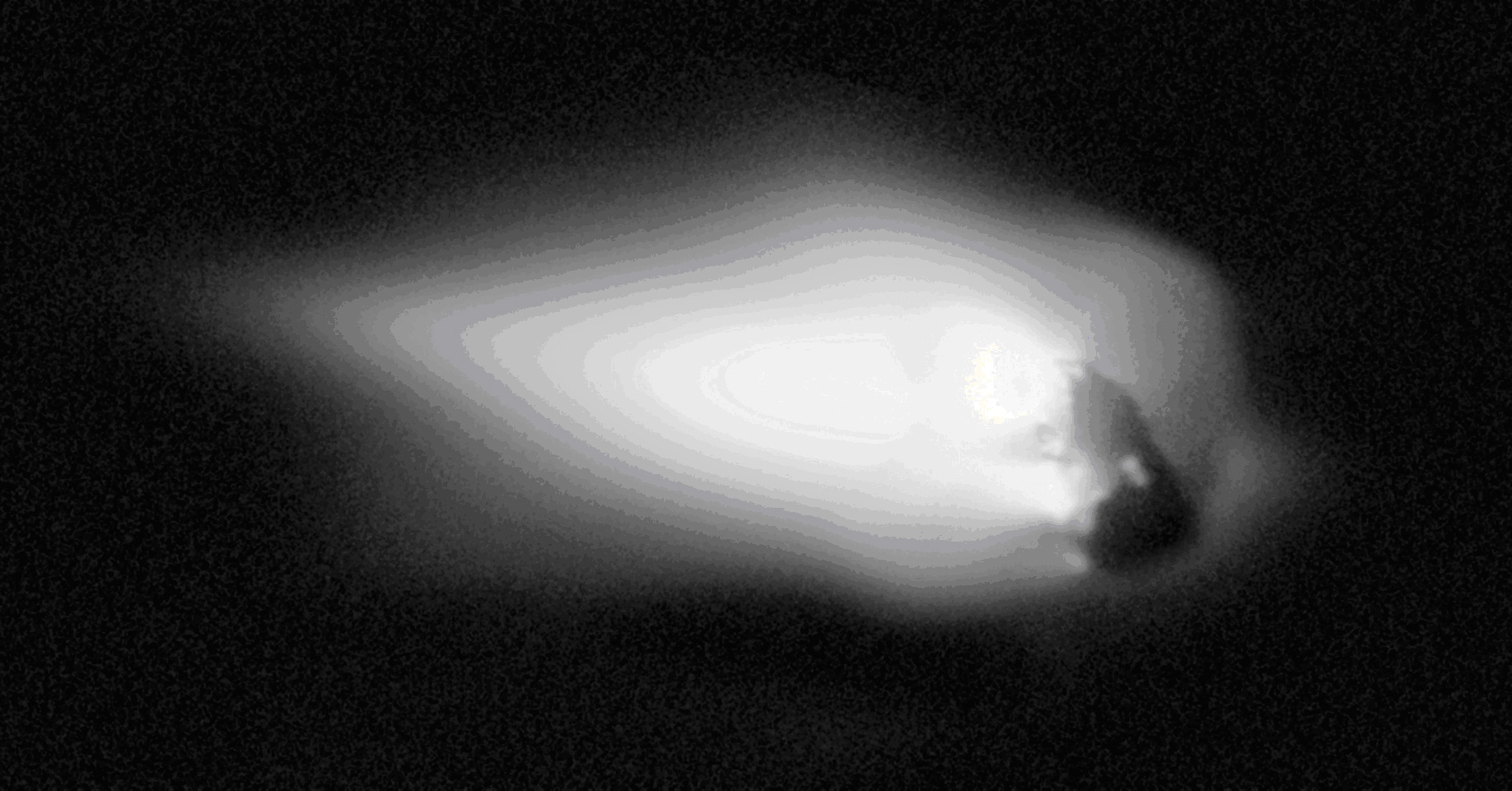
The odd thing about it is the rarity of its use anywhere and the site that provided it gives no other detail about it other than “Nucleus of Comet Halley. Giotto fly-by 1986”. So out of curiosity, I decided to do a google image search for “Comet Halley” and turns out that the wallpaper image created by wanderingspace that features this image comes up first!
In the interest of full disclosure, I thought I would post the original to show how it was beautified. Most of the work was really cleaning up the noise and removing artifacts. Much of that noise was in the form of posterization and happens in the coma. So that noise was largely blurred out since the coma would pretty much just be a large blur of white at any rate, but the rate of gradation was still maintained for some level of legitimacy. Color was added to the image last, but that is entirely artistic. That and the upper left corner of the coma which was extended to fill the frame are the only fictional parts of the image.
All in all… it seems to me that when you remove the artifacts, you pretty much have the final image which was used for the wallpaper image. Less manipulation and more “clean-up” which is what I try to do with all images here when needed.
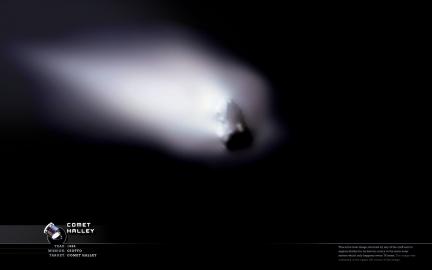
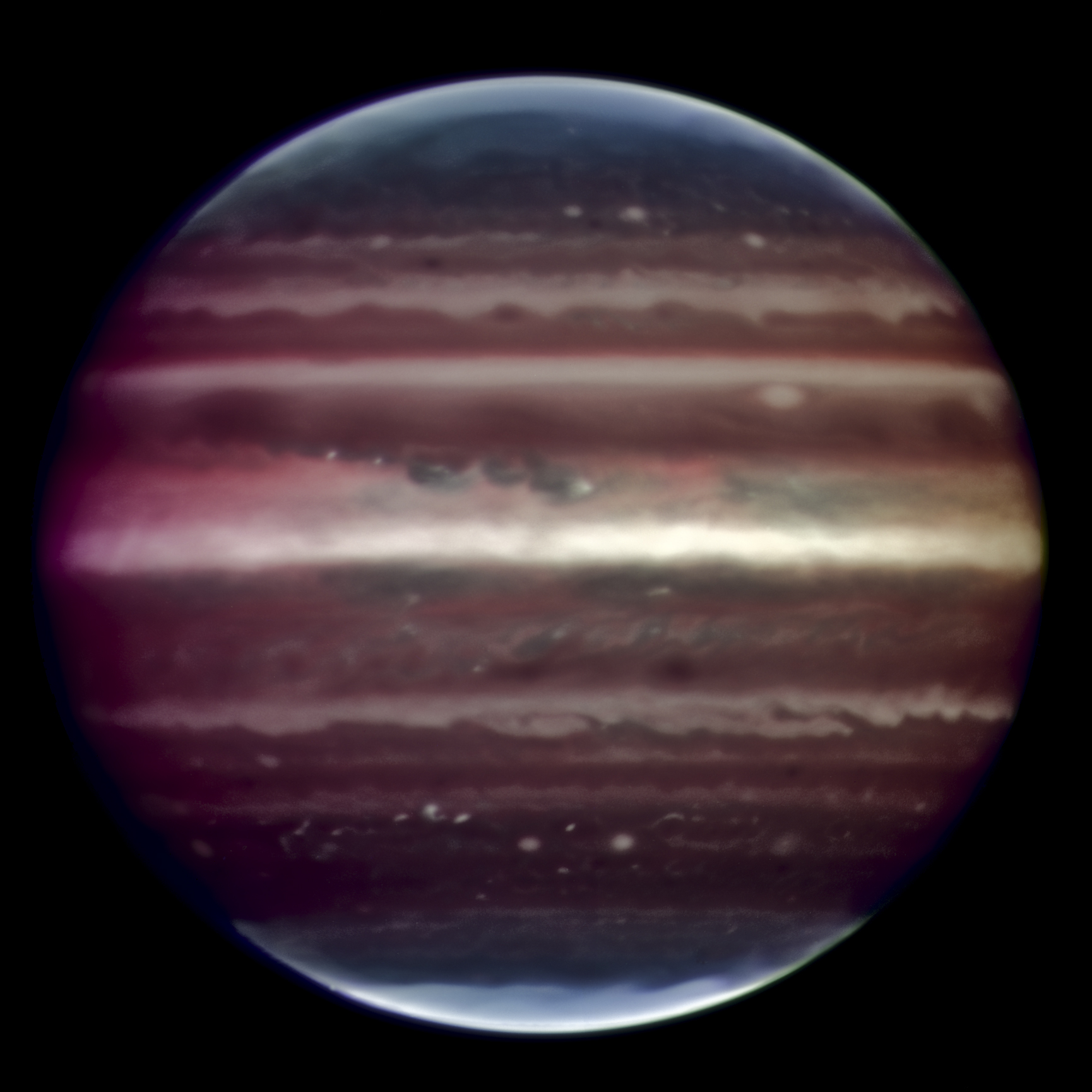 “Jupiter in infrared light, taken on the night of 17 August 2008 with the Multi-Conjugate Adaptive Optics Demonstrator (MAD) prototype instrument mounted on ESO’s Very Large Telescope. This false colour photo is the combination of a series of images taken over a time span of about 20 minutes, through three different filters (2, 2.14, and 2.16 microns).”
“Jupiter in infrared light, taken on the night of 17 August 2008 with the Multi-Conjugate Adaptive Optics Demonstrator (MAD) prototype instrument mounted on ESO’s Very Large Telescope. This false colour photo is the combination of a series of images taken over a time span of about 20 minutes, through three different filters (2, 2.14, and 2.16 microns).”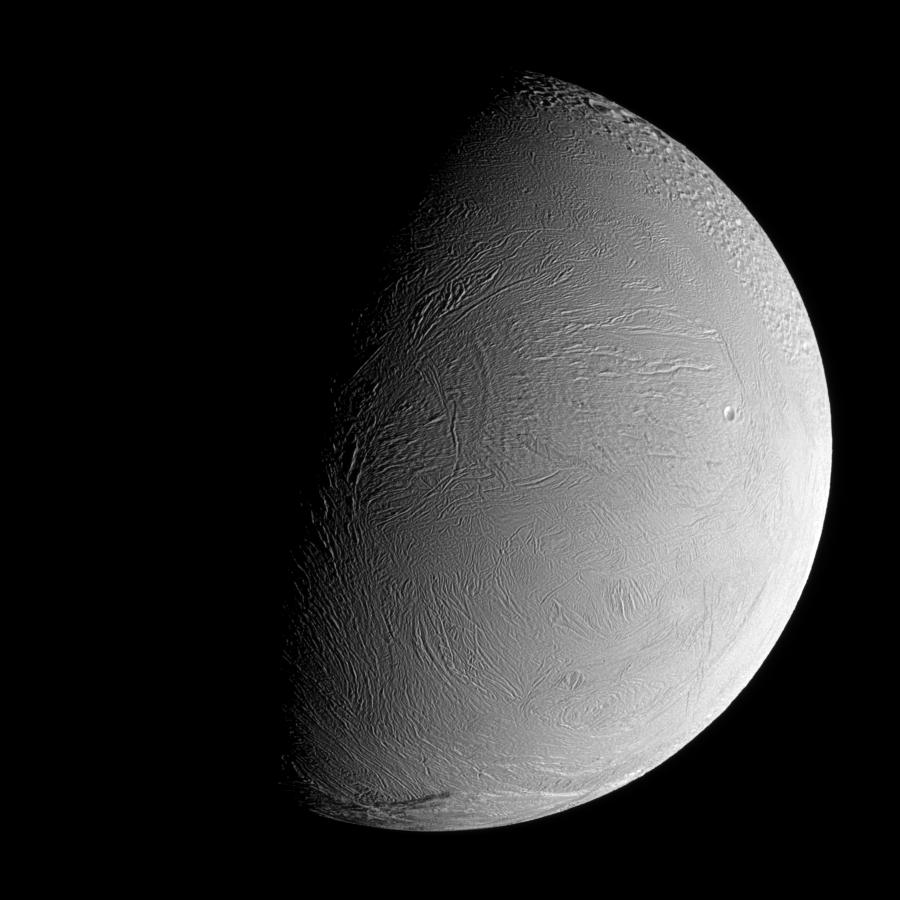
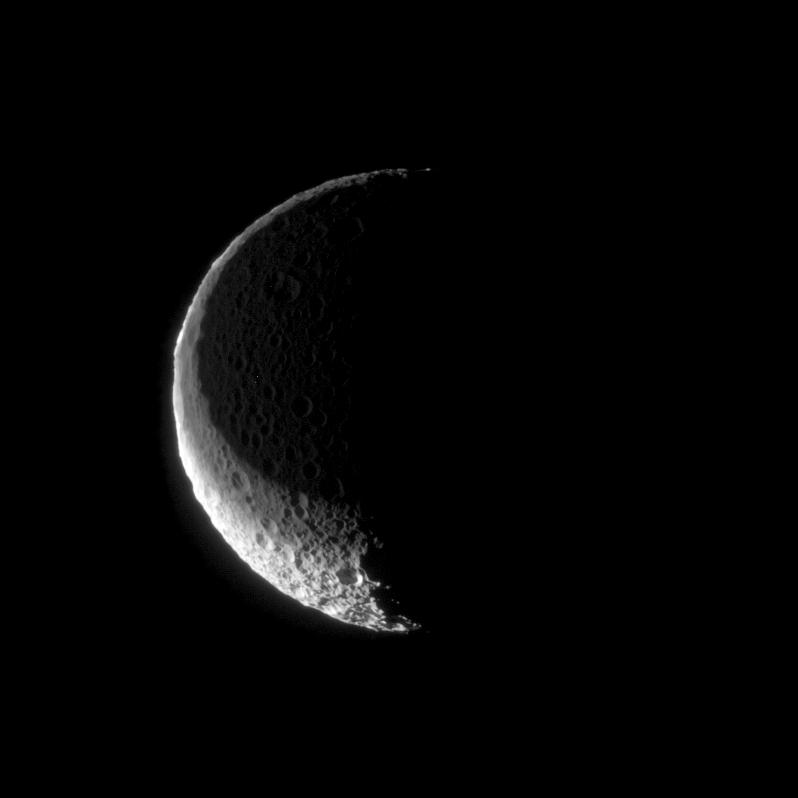



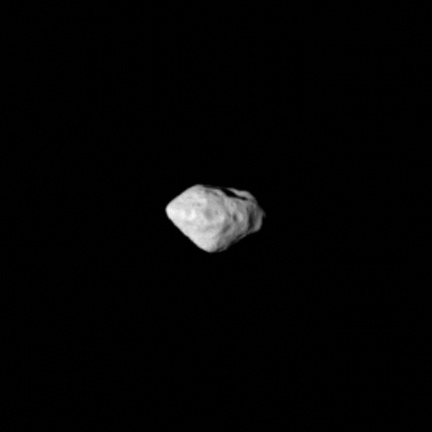 Asteroid Steins seen from a distance of around 800 km by Rosetta. This tiny asteroid is only around 5 km at it’s largest dimension with a crater on the top right that is approximately 1.5-km in size. That is a large impact for such a tiny body, but we have seen small bodies survive such large impacts before (Phobos, moon of Mars for instance). It seems like a pretty typical asteroid thus far and joins the growing family of such bodies visited by we humans. As a matter of fact, if I didn’t know where this came from — I would have assumed it was just another tiny moonlet imaged by Cassini in orbit around Saturn.
Asteroid Steins seen from a distance of around 800 km by Rosetta. This tiny asteroid is only around 5 km at it’s largest dimension with a crater on the top right that is approximately 1.5-km in size. That is a large impact for such a tiny body, but we have seen small bodies survive such large impacts before (Phobos, moon of Mars for instance). It seems like a pretty typical asteroid thus far and joins the growing family of such bodies visited by we humans. As a matter of fact, if I didn’t know where this came from — I would have assumed it was just another tiny moonlet imaged by Cassini in orbit around Saturn.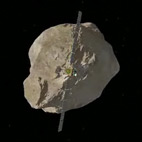 Steins, a rare E-type asteroid, is going to have company tomorrow as Rosetta swings by on its long voyage to Comet 67P/Churyumov-Gerasimenko scheduled to occur in 2014. See a quick computer simulation of tomorrow’s encounter
Steins, a rare E-type asteroid, is going to have company tomorrow as Rosetta swings by on its long voyage to Comet 67P/Churyumov-Gerasimenko scheduled to occur in 2014. See a quick computer simulation of tomorrow’s encounter 
